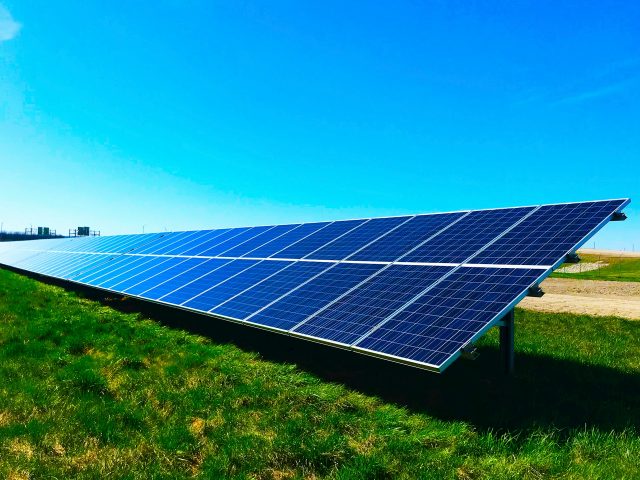
From solar power to wind energy, renewable resources are changing the way we think about power generation. However, a key challenge is how to store this energy for use when the sun isn’t shining or the wind isn’t blowing. In this pursuit, recent innovations in battery energy storage systems (BESS) have opened new horizons, offering exciting breakthroughs that are driving our transition to a more sustainable energy future.

Advancements in Lithium-ion Batteries
Lithium-ion batteries are the backbone of modern energy storage solutions, used extensively in everything from smartphones to electric vehicles. Recent innovations have centred around improving the energy density and lifespan of these batteries. In 2021, researchers at Harvard University announced a new lithium-ion design that could potentially last for decades without significant degradation, a significant leap from the current average lifespan.
Another significant development in the lithium-ion field has been the introduction of lithium-sulfur batteries. This technology offers a higher energy density, potentially supplying more power for a given weight. However, these batteries remain in the early stages of development and commercialisation.
Solid-state Batteries: A Game-Changer?
In the quest for safer, more efficient energy storage, solid-state batteries are emerging as a promising contender. Traditional lithium-ion batteries use a liquid electrolyte, which can pose a risk of overheating or even exploding. Solid-state batteries replace this liquid with a solid material, which could increase safety, lifespan, and energy density.
Automotive companies like Toyota and QuantumScape, a company backed by Volkswagen and Bill Gates, are investing heavily in solid-state technology. While still under development, the prospects of this technology could revolutionise electric vehicles and renewable energy storage.
Flow Batteries: A New Era for Large-scale Storage?
Flow batteries, another lesser-known but equally promising technology, offer energy storage solutions particularly suited to grid-level applications. These batteries use two tanks of liquid electrolytes, allowing them to scale energy capacity independently from power output, an advantage over traditional battery designs. This flexibility positions
flow batteries as an ideal solution for large-scale renewable energy storage, smoothing out the intermittent power supply from sources like solar and wind.
One such advancement is the development of organic flow batteries by researchers at the University of Southern California. These new models replace the costly and often toxic metals typically used with organic compounds, reducing costs and environmental impact.
Charging Ahead with Supercapacitors
Supercapacitors, also known as ultracapacitors, are an emerging technology that could potentially reshape the energy storage landscape. Unlike traditional batteries that slowly release energy through a chemical reaction, supercapacitors store energy physically and can release it quickly. This makes them perfect for applications that require rapid discharge and charge cycles with a long cycle life.
While supercapacitors currently can’t compete with lithium-ion batteries in terms of energy density, they significantly outperform them in terms of power density and lifespan. An average supercapacitor can endure millions of charge and discharge cycles, while a lithium-ion battery might offer only several thousand before experiencing significant capacity loss.
A noteworthy development in this field is the hybrid supercapacitor, or “supercabattery”, developed by scientists at University College London (UCL). This device combines the fast charge/discharge characteristics of supercapacitors with the high energy density of batteries. UCL’s supercabattery could potentially charge and discharge between 10 and 100 times faster than a typical lithium-ion battery. “Capacitors and supercapacitors are able to withstand more than 106 charge/discharge cycles as opposed to batteries that are only able to be cycled roughly 1500 times. This means the lifetime of capacitors and supercapacitors is greater than 10 years compared to ~3 years for batteries” (University College London).
Another major innovation comes from a team at the Massachusetts Institute of Technology (MIT) who recently announced the development of a supercapacitor made entirely of carbon. This new design could provide a safer, more stable, and environmentally friendly alternative to traditional batteries.
While supercapacitors may not completely replace traditional batteries anytime soon, their exceptional performance in specific applications could see them become a vital part of tomorrow’s energy storage infrastructure. Their quick charge and discharge rates, high power density, and long lifespan make them a powerful tool within a wide array of sectors, including renewable energy, transportation, and grid management, among others. As research continues to progress in the field, the future of energy storage may well see supercapacitors playing a significant role.
The Future of Battery Energy Storage Systems
Undoubtedly, the advancements in battery energy storage systems signal a shift towards a more sustainable, efficient, and reliable power supply. From improvements in lithium-ion batteries to the development of solid-state and flow batteries, we are witnessing a series of innovations poised to transform our energy landscape.
Integral to this progression is the continual balance between energy capacity, power output, safety, and cost. With significant research, investment, and collaboration across the globe, it is clear that the future of energy storage is bright and evolving rapidly. As these technologies continue to mature, so does our leap towards a sustainable energy future.
With these exciting developments, the powerful promise of renewable energy can finally be fully realised, offering hope for a cleaner, more sustainable world.













